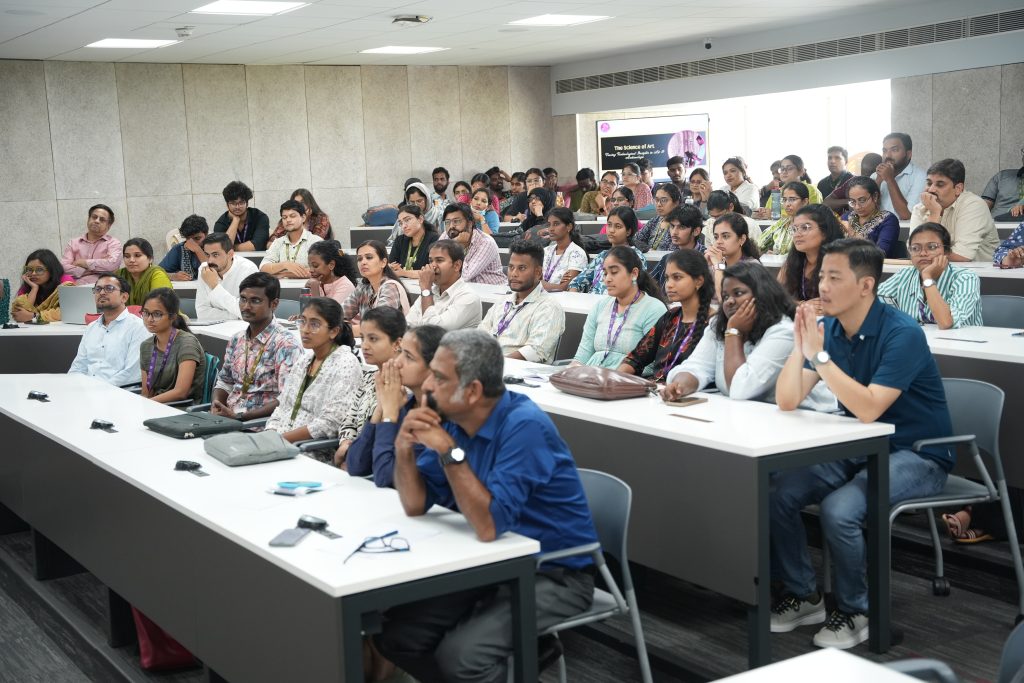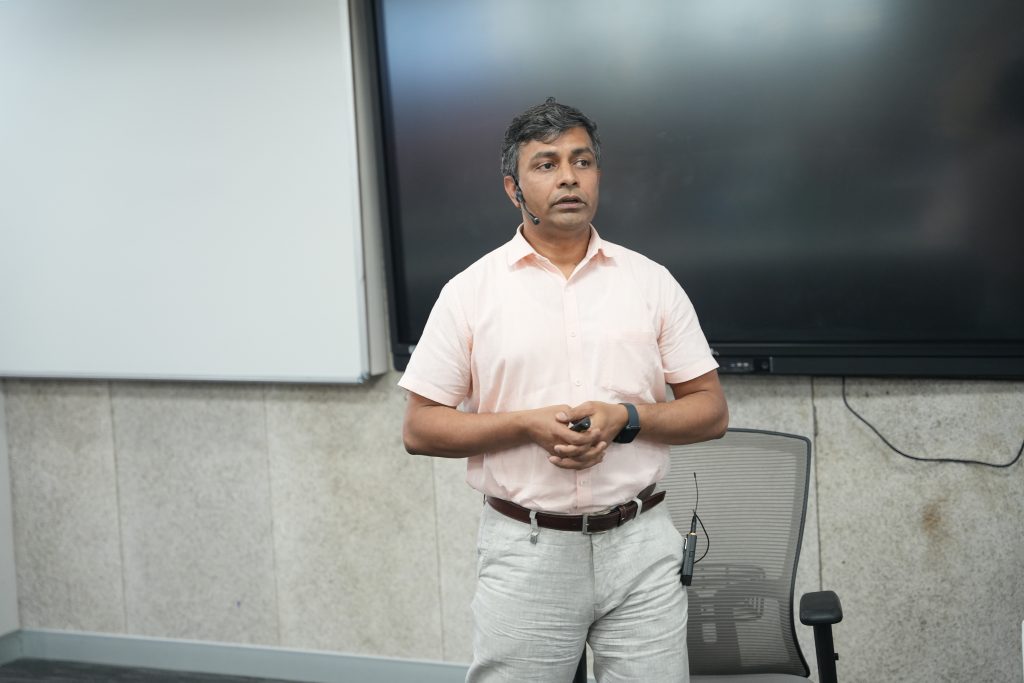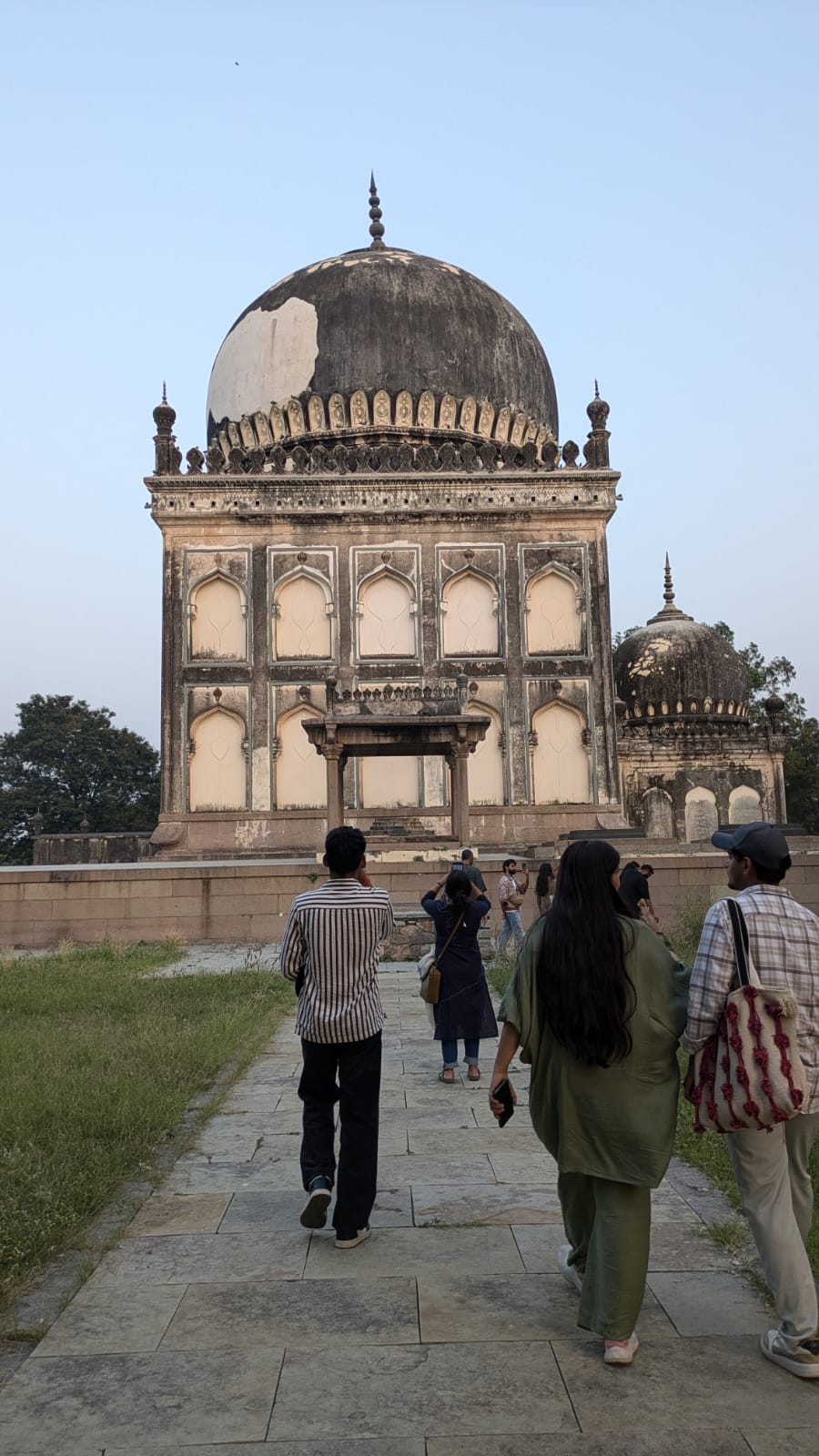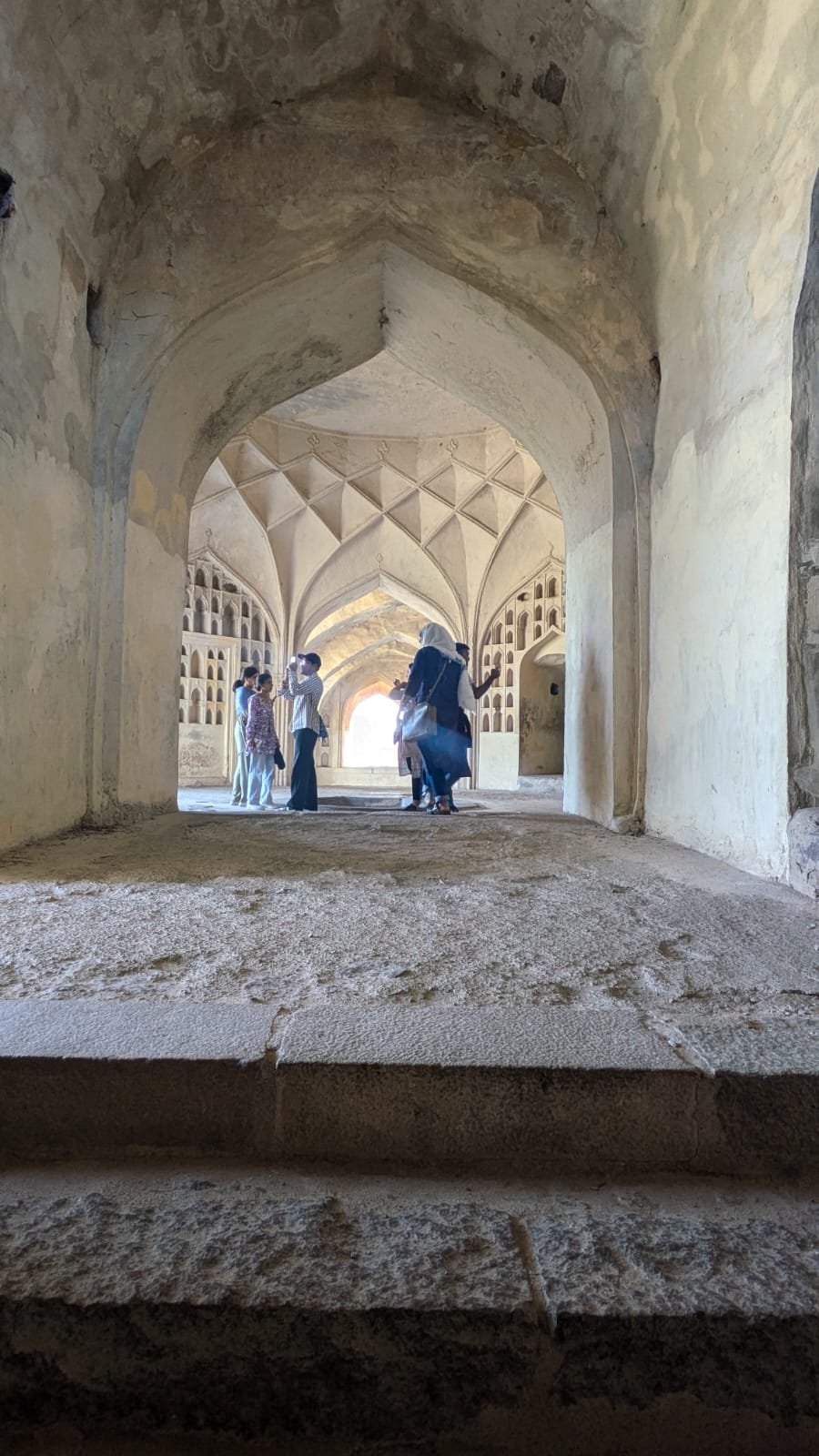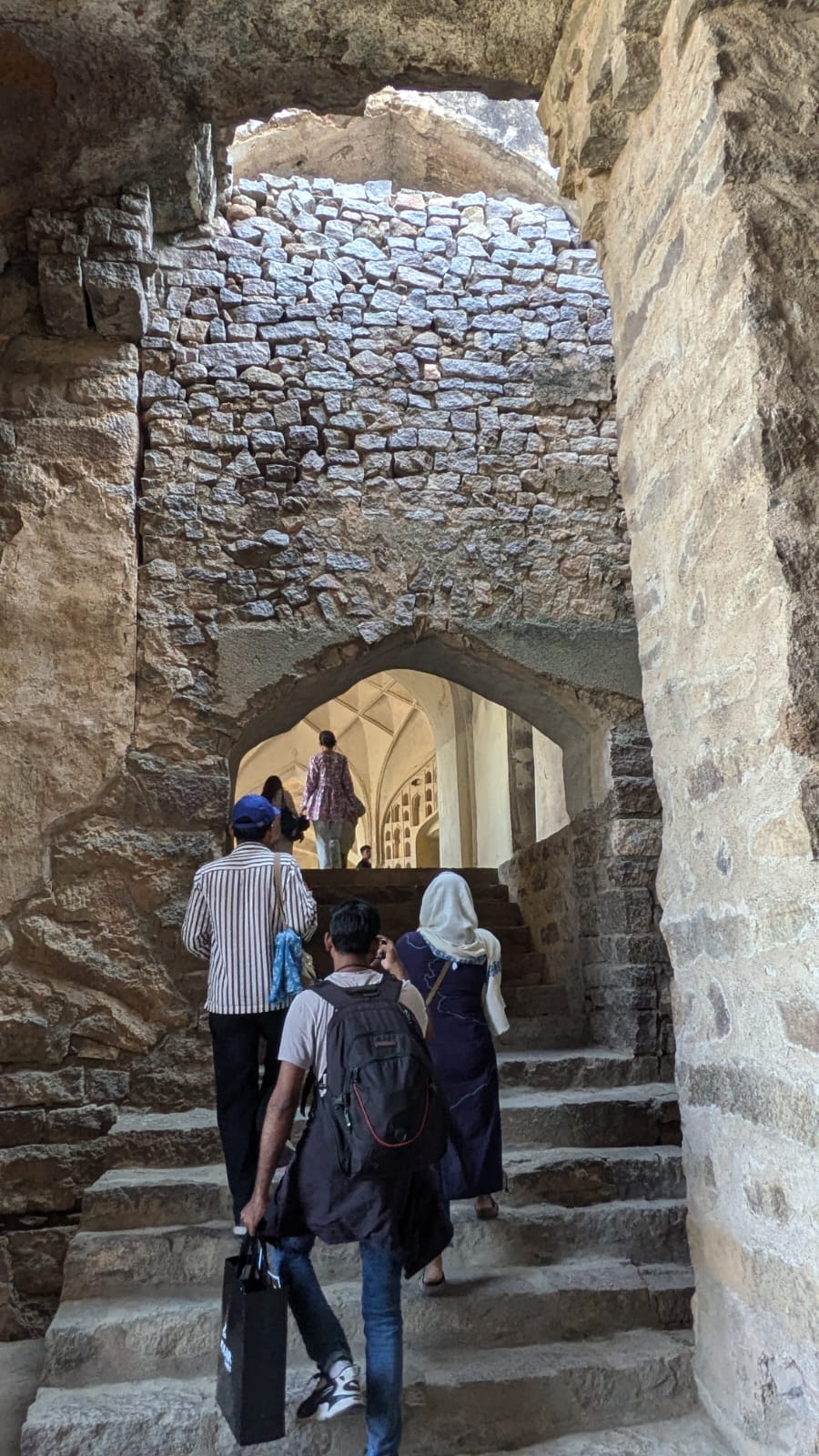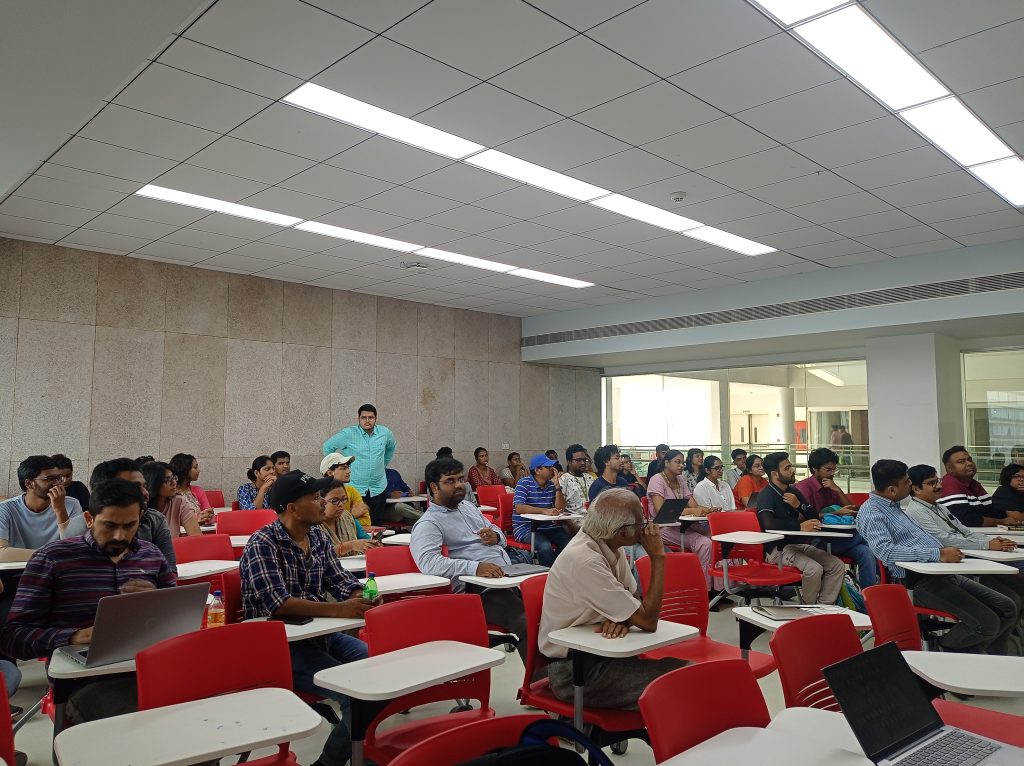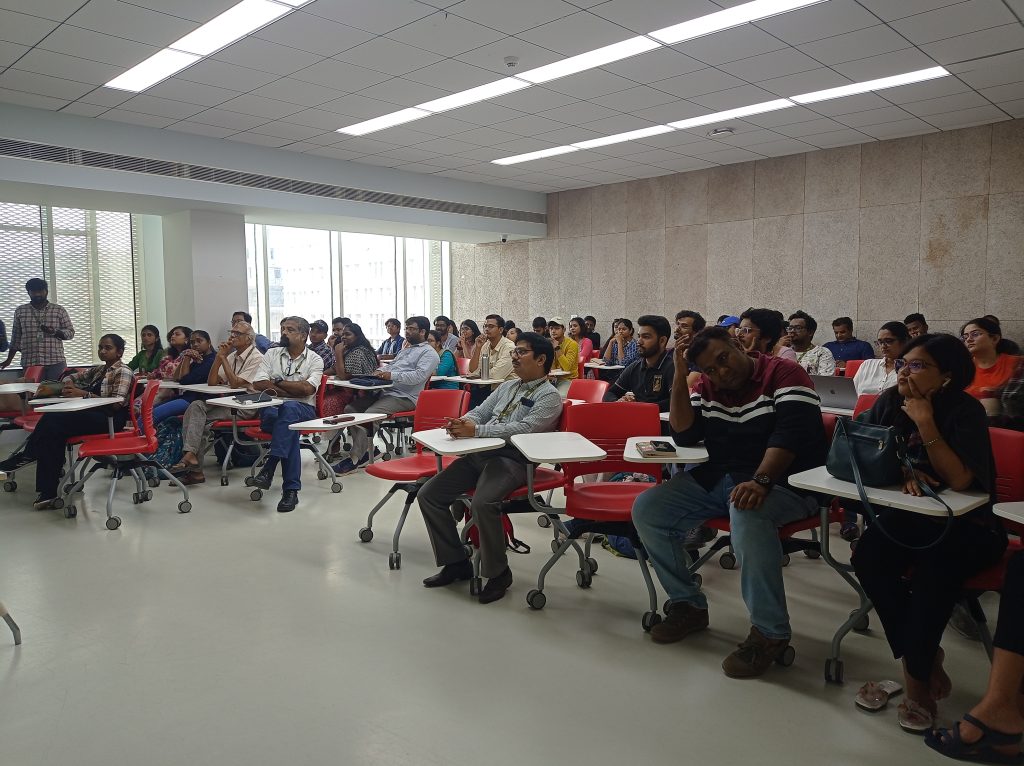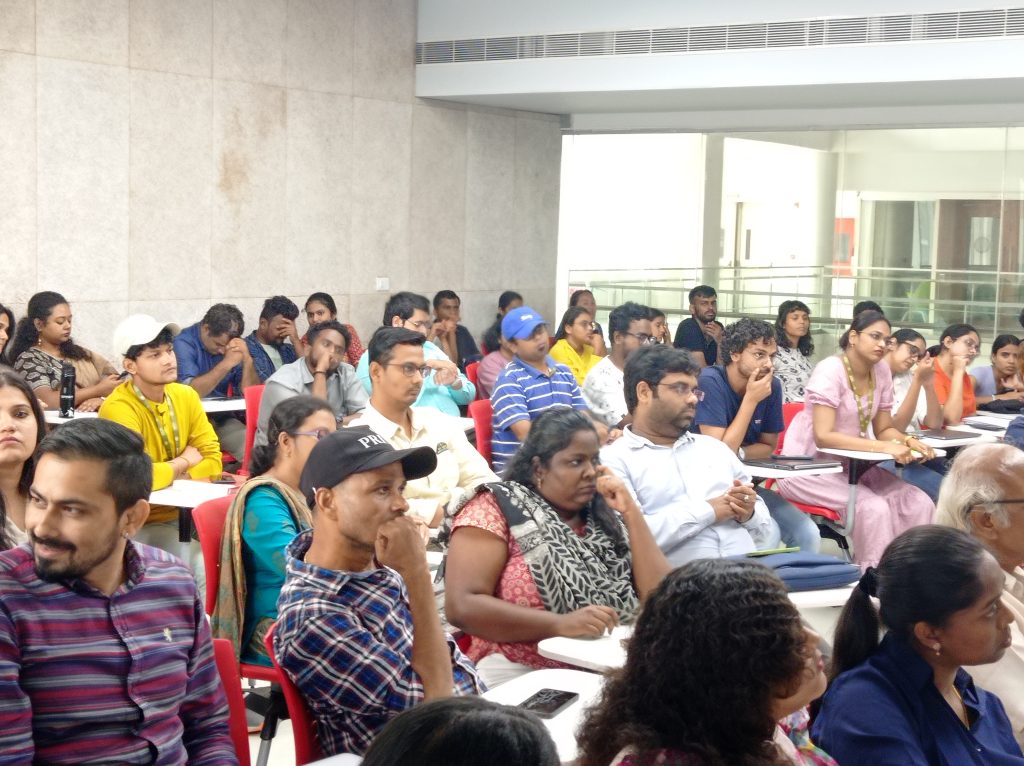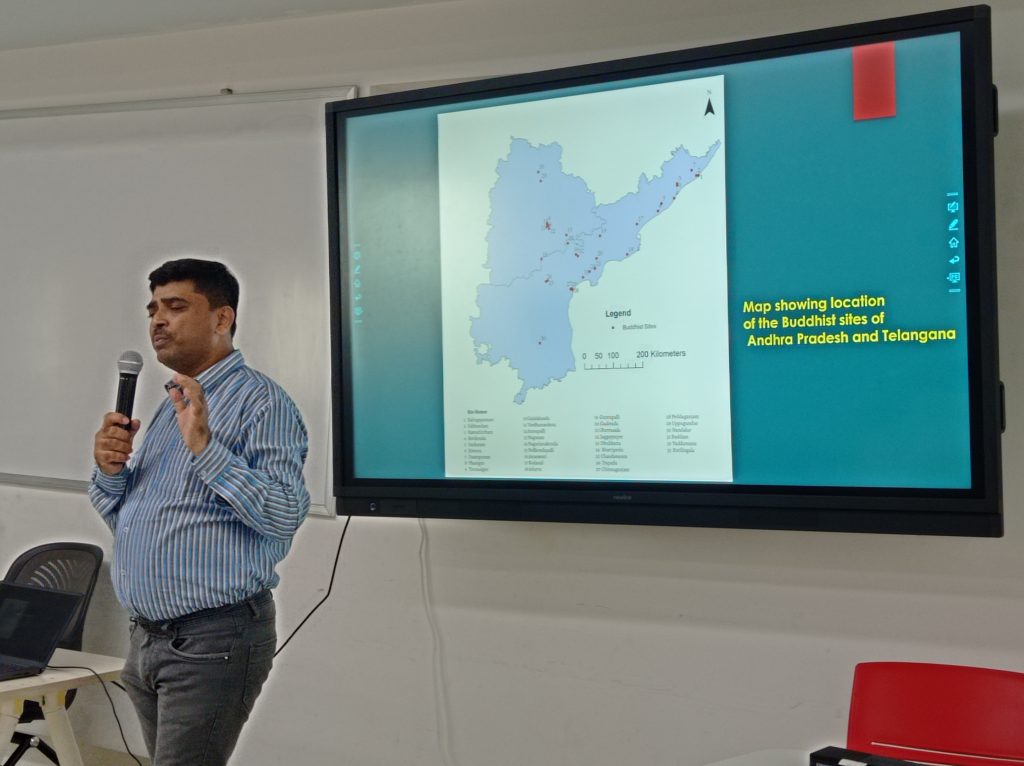An Introspection into the Science of Art and Archaeology
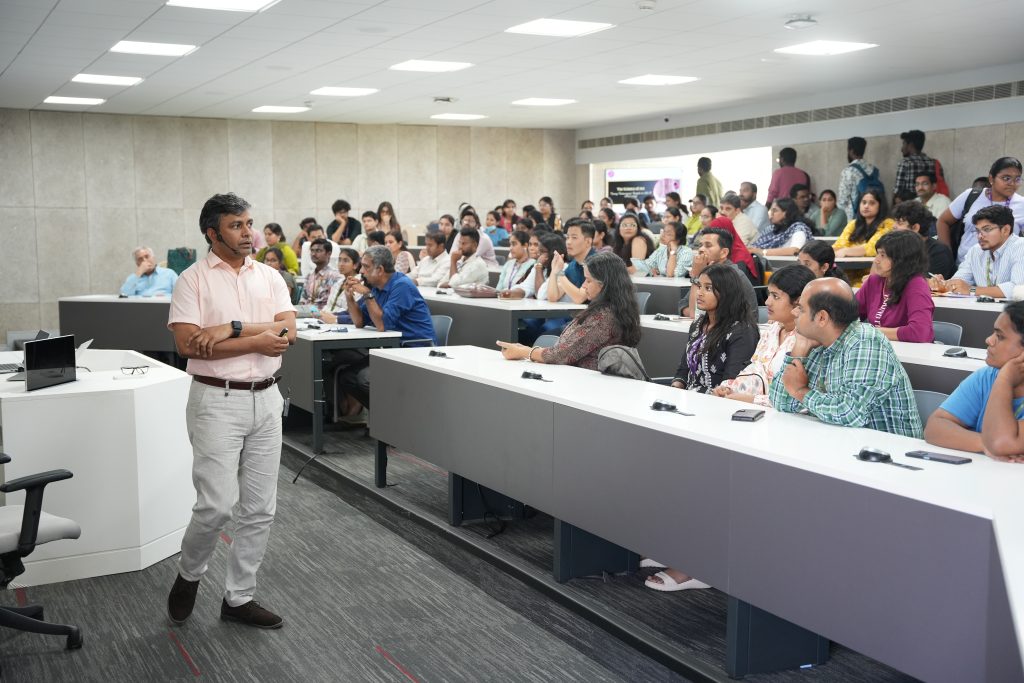
The Department of History, Easwari School of Liberal Arts, hosted Prof. Satish C. Pandey, Dean of Academic Affairs, Professor & Head—Department of Art Conservation, Indian Institute of Heritage, Ministry of Culture, Government of India, and Vice Chair—Directory Board, International Council of Museums—Conservation Committee (ICOM-CC), ICOM, Paris, France, for an insightful lecture on tracing technologies in art and archaeology on April 03, 2025.
In his session, Prof. Pandey shared his expertise in art conservation and archaeological science, offering valuable insights into the study of provenance and technology. He discussed the Site of Kunal from the Harappan Period and the intricate analysis of ancient pottery. His research highlighted the natural techniques used in pottery-making, where shape, colour, and firing methods were influenced by organic materials. Elements such as manganese (black), iron (red), and lime (pure white) were used to create distinct hues, while the lightweight nature of the pots was a result of their composition.
In addition to pottery, Prof. Pandey delved into the conservation of historical paintings. His research has uncovered instances of forgery and modification in artworks intended for public display. By utilising infrared analysis, he demonstrated how changes in oil paints, cracking patterns, and colour modifications over time help researchers restore and authenticate original paintings.
His visit provided an enriching experience, deepening our understanding of conservation science and its role in preserving cultural heritage.
- Published in Departmental News, History Current Happenings, History News, News
Field Trip to Hyderabad: A Journey of Education, Culture, and Adventure
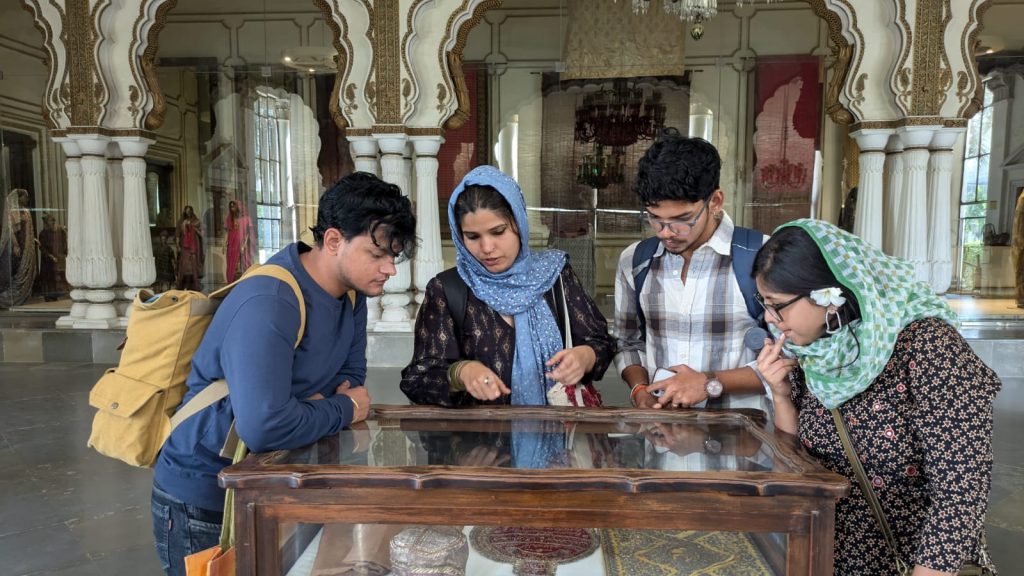
The 5th Semester B.A. History students went on a field trip to Hyderabad as part of their courses ‘Medieval India’ and the ‘Eighteenth Century in Indian History’. Dr Aqsa Agha, Course Coordinator, and Dr Manaswini Sen led the study group to explore the city’s historical and cultural significance, enhancing their learning outside the classroom for the two courses.
The group visited Charminar, exploring the iconic monument and its surrounding bazaars, Golconda Fort, discussing its history and architecture with a Heritage Walk Practitioner from Hyderabad, and finally the Qutb Shahi Tombs and gardens, a standing testament of Indo-Persian architectural excellence.
The field trip provided students with a refined exposure to the diverse culture and history of Hyderabad and the historical context of the evolution of the culture of the city. The students had a wonderful chance to visit the important historical monuments and urban morphology that mark the period of study in the courses on Medieval and Eighteenth-century Indian History.
The field trip fostered a deep understanding of the respective courses, inspiring students to explore beyond books and classrooms.
- Published in Departmental News, History Current Happenings, History News, News
Tracing Feminist Discourse in the Intellectual Output of Women Trade Unionists in Late Colonial Bengal
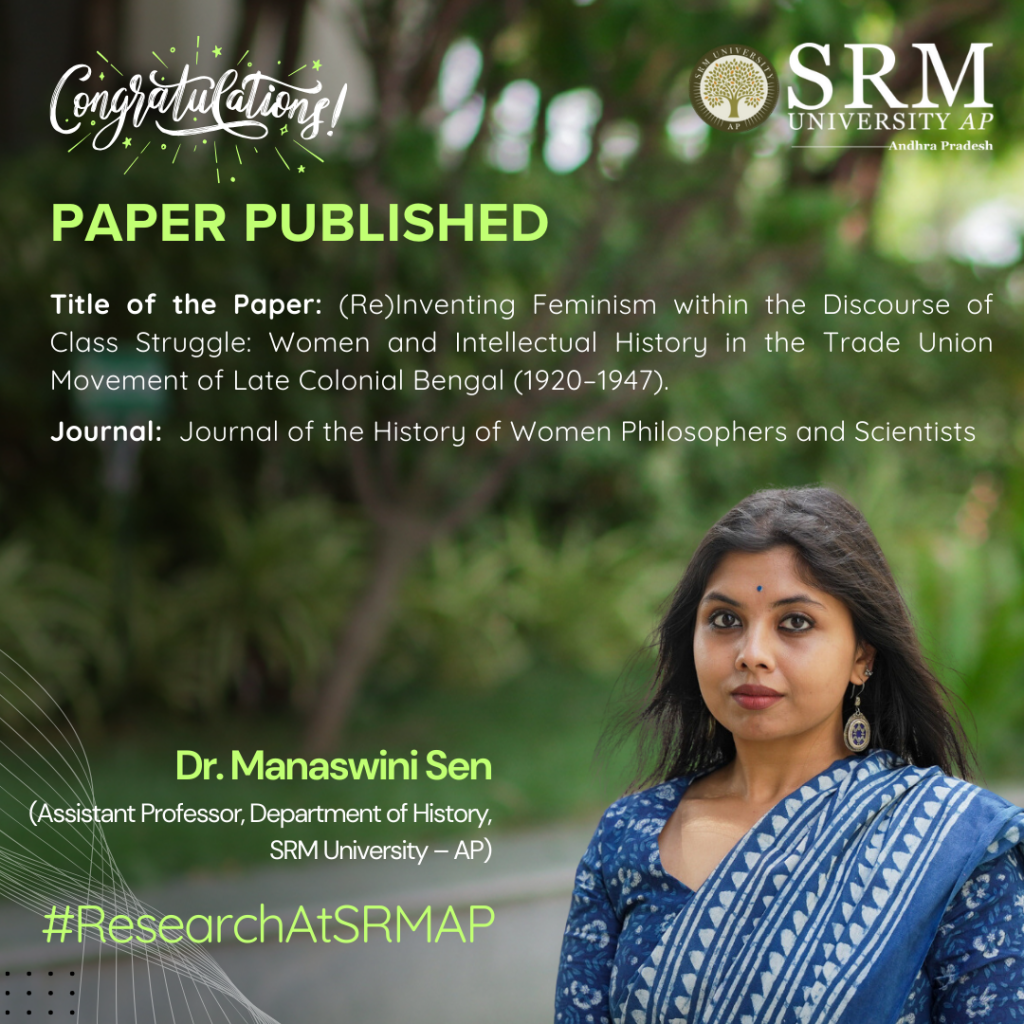
Dr Manaswini Sen, Assistant Professor at the Department of History, has published an insightful paper tracing the ideological and intellectual output of women trade unionists in late colonial Bengal. Her research paper titled “(Re)Inventing Feminism within the Discourse of Class Struggle: Women and Intellectual History in the Trade Union Movement of Late Colonial Bengal (1920–1947)”, published in the prestigious Journal of the History of Women Philosophers and Scientists, offers a novel perspective on understanding the class struggle, anticolonial discourse in the patriarchal society of colonial Bengal.
Abstract
This paper envisages (re)constructing the intellectual praxis of women trade unionists in late colonial Bengal. By arguing how political practice habitually translates to political thought, the paper devises a methodology to address the gendered discourse of intellectual history in the Global South. It focuses on intellectual output, primarily journal articles of women trade unionists like Santoshi Kumari Gupta, Maitreyee Bose, and Kanak Mukherjee, to trace a genealogy of how class struggle was perceived by women labour activists across the ideological spectrum of nationalism, socialism, and communism between 1920 to 1947 in Bengal. The piece is an effort to transcend the manifold marginalisations that plague the establishment of feminine political praxis within the regulating structures of colonialism and capitalism. In the process, it bids to unfold an alternative narrative of the anti-colonial, anti-capitalist, and anti-patriarchal narrative of the decolonisation of South Asian intellectual thought.
Research, Collaboration and Future Research Plans
The research strives to bring to the forefront the intellectual contributions of three female trade unionists in the late colonial period to trace the evolution of discourses on anticolonial class struggle from a gendered perspective. With the global turn in intellectual history, there is an augmented effort at amplifying the ‘small voices of history’. The inherent socio-cultural predicaments in our society make it inordinately challenging to trace conventional sources for mapping the intellectual endeavours of women. This paper aims to rectify this gap by reconstructing women labour activists’ intellectual practises and literary output in the early 20th century. In the process, the research tries to bring forth narratives of anticolonialism, which drowns in the overwhelming presence of nationalism in the discourses of decolonisation of South Asia. This paper was the result of academic exchanges with professors of Benaras Hindu University, Dr B.R. Ambedkar University, Delhi, and the University of Paderborn, Germany.
Dr Sen primarily researches marginal anticolonial epistemological traditions of South and South East Asia. Her thesis on the evolution and dissemination of socialism in late colonial Bengal, which focuses on an intellectual history of trade unionism, forms the basis of her first monograph. However, she is now focusing on the transnational and transcontinental intellectual networks of a wide spectrum of leftist labour activists and proto-nationalists and the ways these fringe intellectual traditions interacted with each other and nationalism. Based on a rich archive across India and Europe and a plethora of alternative sources, she tends to devise new methodological interventions in the field of Global Intellectual History, making labour history more accessible and relevant in scholarly circles.
- Published in Departmental News, History Current Happenings, History News, News, Research News
Research Fellowship from Humboldt University of Berlin
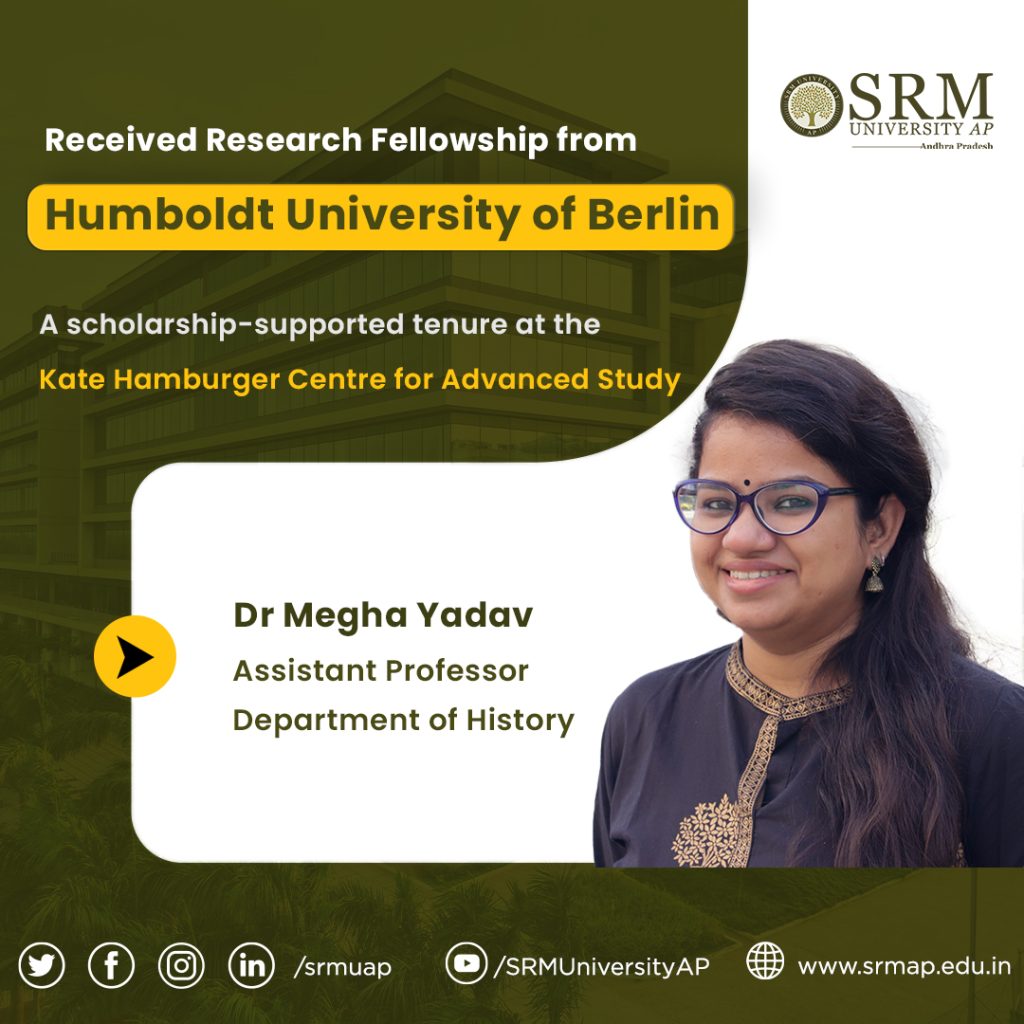
Dr Megha Yadav has received a prestigious fellowship from the Käte Hamburger Centre for Advanced Study, inherit.Heritage in Transformation, Humboldt Universität Zu Berlin, Germany. The fellowship allows for the undertaking of the research project, Visualising the Tradition, Preserving History: Material Practices in Tibetan Buddhism. This project takes an initiative to understand the ideas of heritage and history among the Tibetan Buddhist community by looking at the visual material and its heritage in Tibetan society to reach a nuanced picture of Tibetan history and heritage which keeps the Tibetan community at the centre of this understanding.
The project will attempt to understand the ways and methods of remembrance, preservation, and transmission of what Tibetan Buddhists consider to be their history. Most academic works have utilized Buddhist textual traditions to talk about Tibetan society, which has the inherent limitation of being one-dimensional. As a point of entry, this research will focus on thangka paintings as they create a very intimate window to people’s way of thinking about themselves, their universes, and their personal history. It was a ‘material’ to be showcased in public spaces, notably monasteries. It was meant for everyone to see, pay their respects, and take the image back with them in their minds and hearts. In a sense, these paintings were a showcase for the Tibetan Buddhist community.
This project will also pay attention to the changes brought about by 20th-century events, most notably colonization and the exile of the Dalai Lama and many Tibetans by inquiring into the changes brought into the idea and making of thangka paintings, raising questions about patronage, method, and content in the 20th century. An equally important intervention in the method and content of these paintings came with the spread of digital media platforms. While digital media has ‘democratised’ the making of thangka paintings, the question remains: what has it done to the process of making a thangka? How has the value associated with the paintings, as well as their making process, been changed by the technical medium? Has it impacted the content of these paintings? More importantly, what kind of changes have come into the community’s understanding of their past and present? These and any other issues that may come up during research will be addressed.
- Published in Departmental News, History Current Happenings, History News, News
Discourse on Buddhism provides Valuable Insights
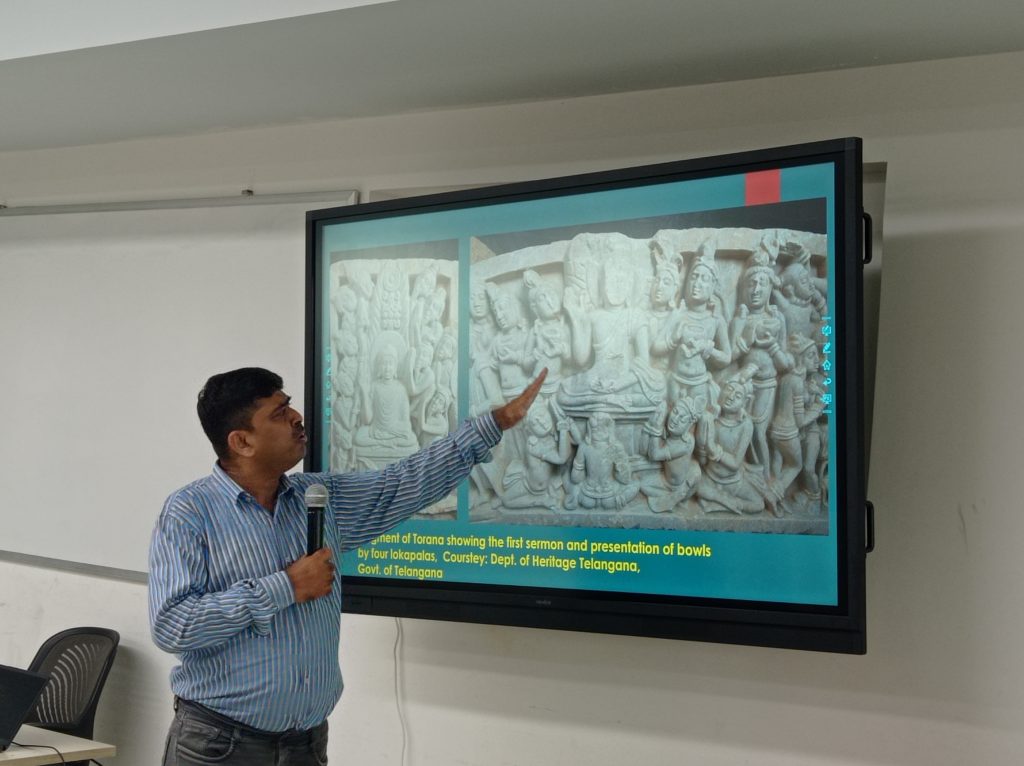
Dr Shrikant Ganvir, Assistant Professor in Ancient Indian History, Culture, and Archaeology from Deccan College Post Graduate Research Institute, Pune, delivered an invigorating session organised by the Department of History at SRM University-AP on October 11, 2023. Dr Ganvir’s session dealt with Buddhist studies, particularly of the Andhra region, and he has extensively worked on sites like Phanigiri, Salihundam, Amaravati, Guntapalli, and likewise.
Dr. Ganvir specialises in Buddhist art, architecture, and iconography. His area of expertise includes the religious history of Deccan, the history of Buddhism in South Asia, the rock-cut architecture of the Deccan, the religious imagery of ancient India, and the archaeology of religions. His broad knowledge in these fields allowed him to share enlightening insights with his audience.
- Published in Departmental News, History Current Happenings, History News, News
“Films as History; Exploring Historiophoty”, the First of Illuminating Webinar Series
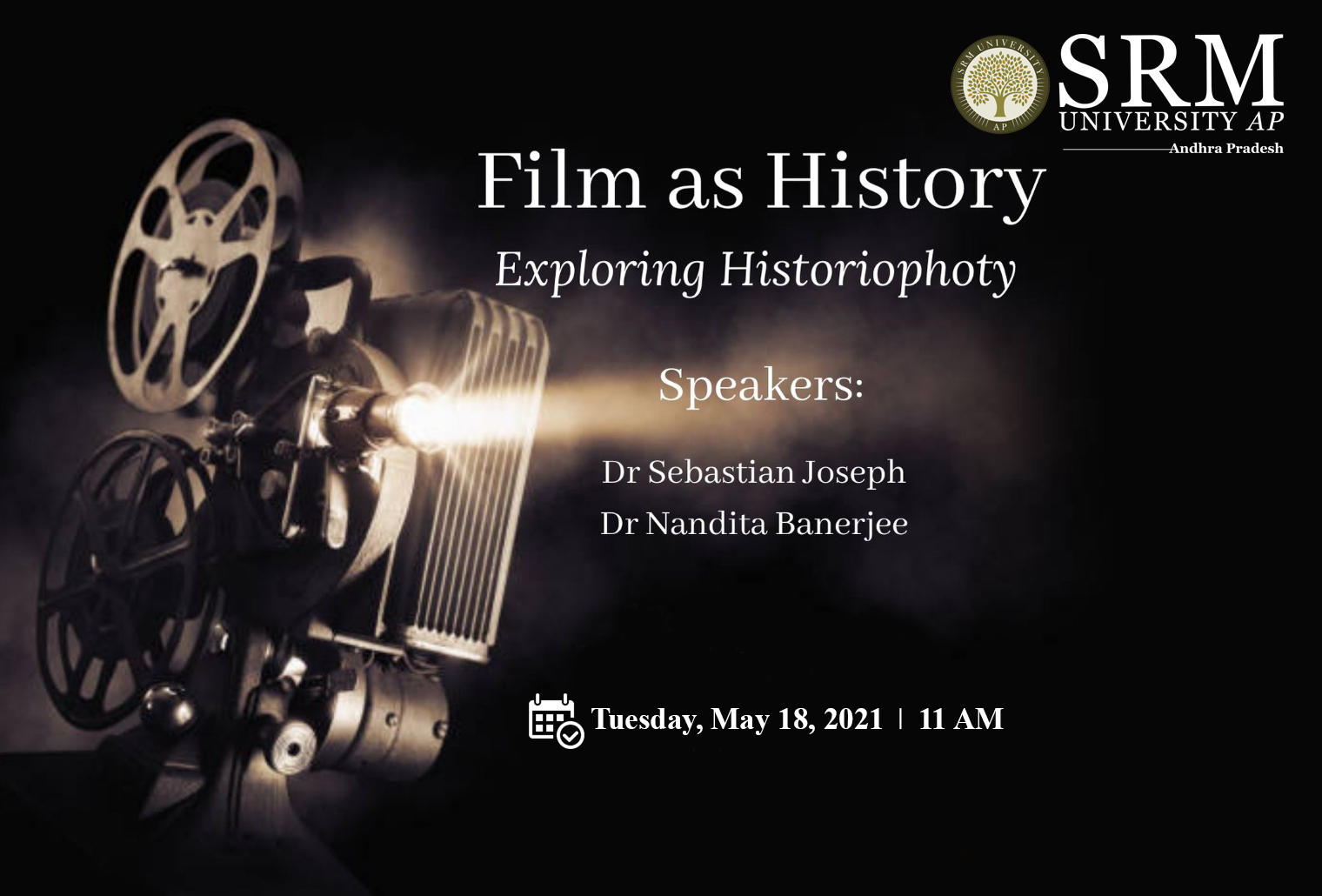 A webinar aimed to discuss the use of films in particular and visual images in general as sources for the reconstruction of History was organized by the Department of History on May 18, 2021. Films as History; Exploring Historiophoty, the first of the monthly Webinar series on new and exploratory themes in History, dealt with the promises and challenges of Historiophoty as a sub-stream of history. Following Hayden White’s pathbreaking analysis of visual imagery and its location in historiography, historiophoty has emerged as a most promising pathway for historians particularly as we move towards a rapidly digitizing world.
A webinar aimed to discuss the use of films in particular and visual images in general as sources for the reconstruction of History was organized by the Department of History on May 18, 2021. Films as History; Exploring Historiophoty, the first of the monthly Webinar series on new and exploratory themes in History, dealt with the promises and challenges of Historiophoty as a sub-stream of history. Following Hayden White’s pathbreaking analysis of visual imagery and its location in historiography, historiophoty has emerged as a most promising pathway for historians particularly as we move towards a rapidly digitizing world.
Dr Sebastian Joseph, a Historian and Film Critic and recipient of the State Award for Best work on Film History 2020, and the author of Cochin Forests and British Techno-ecological Imperialism in India addressed the first part of the webinar. He compared the textual and cinematic representations of history through the lens of the Historian Robert Rosenstone, who divided the plot of a film into three parts: beginning, middle, and end. Dr Joseph conveyed his knowledge of history and cinema through six distinct characteristics put forth by Rosenstone.
(i) A distinction was made between textual and cinematic representations of history, with the latter presenting problematic and conceptual history in a narrative format for better comprehension. (ii) Cinematic representations of history resemble personal narratives more than historical narratives. The straightforward narrative representation aims to communicate and establish an immediate connection with the audiences behind the cinema screens. (iii) The storyline narrated in historical cinematic representations must have a satisfactory conclusion. Historical representations of films dramatize, personalize, and emotionalize, whereas textual history critiques the emotional aspects, as they can invalidate the credibility of the sources. (iv) Film adds to the overall emotional experience of viewers by using music, sound effects, dialogue, and so on. Dr Joseph deduced from Rosenstone’s fifth and sixth characteristics that the historical depictions in cinema are fictional and reflect the socioeconomic and political conditions of society. At the end of the session, he postulated that “there is a tale behind every story, and there is no way that we can look at films as secondary sources of history, but as the primary source for history and historical explanations.”
Dr Nandita Banerjee, Associate Professor at Sidho-Kanho-Birsha University, West Bengal delivered the keynote address during the second half of the webinar. Dr Banerjee provided a critical analysis of the evolution of traditional art and visual images into digitised form. Historians observed the live depiction of civil wars, conflicts, and protests through the documentation captured on camera footage. Visual evidence such as photographs and records are authentic sources and history would be incomplete without them. She further added that “Learning from history is never a one-way street, and learning about the present in light of the past entails learning about the past in light of the present. History is the in-depth study of the past and present. Images, according to some world historians, are the established method of remembering the past. Since the dawn of human evolution, the visual image has served as a representation of social memories in art. ” She validated her perspective by citing the German war and the Vietnamese conflict, both of which are visible in world history because of visual and oral footage. Dr Banerjee also discussed the enormous influence visual images on audiences and the place it marks in the worlds of film and history.
The webinar came to an apprising close with a panel discussion followed by a Q&A session.
Pre-Event Release: https://srmap.edu.in/events/films-as-history-exploring-historiophoty/
- Published in Departmental News, History Current Happenings, History News, News
BA History to MS Computer Science: The interdisciplinary journey abroad
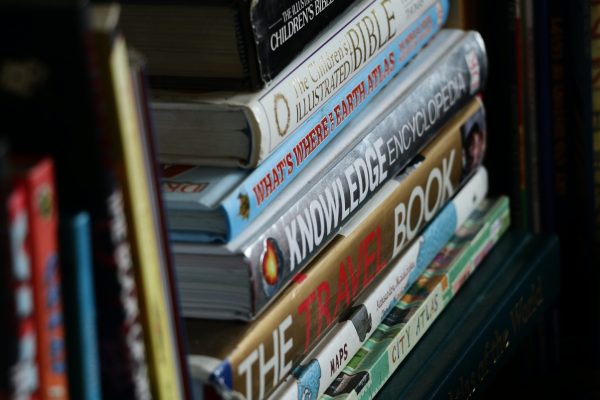 ‘Fostering curiosity and nurturing inquisitiveness’ These have been the goals of the Department of History at SRM University-AP to which Deva Harshalai Nimmagadda, Class of 2021 of Bachelor of Arts in History, belongs.
‘Fostering curiosity and nurturing inquisitiveness’ These have been the goals of the Department of History at SRM University-AP to which Deva Harshalai Nimmagadda, Class of 2021 of Bachelor of Arts in History, belongs.
The entire department and especially his beloved mentor, Dr Maanvender Singh, could not be more proud of him for securing a coveted position in the MS Program in Computer Science at Pace University, New York. Deva found a home for his desire to understand the past and progress towards future in SRM University-AP’s multidisciplinary courses which enabled him to learn more about cutting edge technology and innovative approach to history. This experience was instrumental in helping him achieve his place.
“During my course of studying BA History in SRM University-AP, I have realized that history will not equip you with the skills in only one field, but it also opens you up to diverse fields.” Deva said, “Thanks to the curriculum in SRM University-AP which enabled me to explore various fields like economics, Journalism, Data Science etc. Studying history will demand immense research work and it will refine your analytical skills and these are the skills you need to live in a Tech world. I would like to thank all my faculty for equipping me with such skills even during the pandemic. Today interestingly History major in my profile attracts various employers and projects as they believe in the analytical skill of a history major.”
Prof Singh, who is very fond of Deva Harshalai, spoke very highly about his student, “Deva always cultivated the best attributes a historian could possibly possess- the endless and untiring urge to quest for reason and answers, and the unique and insightful perspective to provide the most logical and comprehensive solution.” He added, “With these qualities in one’s possession one can achieve any ambition should they put their mind and efforts to it.”
“The right skill was cultivated in me, and the right attitude took root.” Deva said to inspire his juniors, “I am extremely grateful to have had the opportunity to call SRM University-AP my alma mater. I am who I am today because of it. I would advise all my juniors to commit to their education seriously and SRM University-AP will give you the experience and encouragement to obtain your dream career.” Deva would like to take advantage of this world capital and invest himself in research and development in the fields of Artificial Intelligence in future.
- Published in Departmental News, History Current Happenings, History News, News
Dr Aqsa Agha receives the South Asia Public Health Fellowship
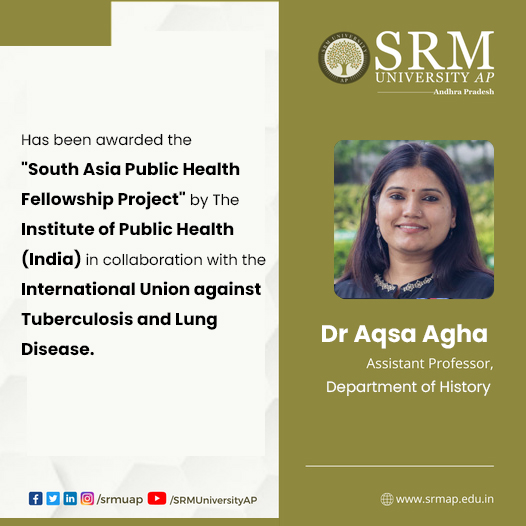 Dr Aqsa Agha, Assistant Professor, the Department of History, has been awarded the South Asia Public Health Fellowship Project by The Institute of Public Health (India) in collaboration with the International Union against Tuberculosis and Lung Disease. As the South Asia Public Health Fellow-India, Dr Agha is expected to conduct research on the ethics of the tobacco industry and submit the report over a period of 8 months, i.e. from December 01, 2021, to July 31, 2022. She has been granted an amount of USD 6660 to carry out the project.
Dr Aqsa Agha, Assistant Professor, the Department of History, has been awarded the South Asia Public Health Fellowship Project by The Institute of Public Health (India) in collaboration with the International Union against Tuberculosis and Lung Disease. As the South Asia Public Health Fellow-India, Dr Agha is expected to conduct research on the ethics of the tobacco industry and submit the report over a period of 8 months, i.e. from December 01, 2021, to July 31, 2022. She has been granted an amount of USD 6660 to carry out the project.
Along with producing a quality case study on India focusing on industry interferences promoting the tobacco epidemic and undermining public policies related to tobacco control, the project entails drafting the regional report on South Asia. It will bring together country-level case studies and implications between December-May, 2022, engaging in the dissemination of the country-level case studies with relevant stakeholders in June-July 2022.
Article 5.3 of the World Health Organization Framework Convention on Tobacco Control (WHO FCTC) acts as a treaty for ratified countries to protect their citizens against the commercial and vested interests of the tobacco industry as per guidelines laid down in the said article. Countries of South Asia, including India, have signed and fully ratified this treaty in the early 2000s. However, the lack of robust national policies and continued influence of the tobacco industry perpetuates the tobacco epidemic, as established in the available literature. Given each country’s mandate to protect the health of its citizens, there is a growing need to understand issues of tobacco industry interferences that undermine public policies meant to protect its population. The South Asian Public Health Fellowship is an initiative to generate knowledge regarding issues of tobacco industry interference not only in India but in other countries of South Asia (i.e., Nepal, Sri Lanka and Bangladesh) to better understand such issues from a regional perspective.
Dr Aqsa Agha holds a PhD in History from the Centre for Historical Studies, JNU. She is also the Project Head of Unnat Bharat Abhiyan at SRM University-AP. Before joining SRM University-AP, Dr Agha was a Consultant with Partners in Change, New Delhi and prepared a report titled “Status of Corporate Responsibility in India, 2020”, focusing on corporate responsibility and ethical business practices. Prior to that, she worked as a Research Officer for National Research Study on Human Trafficking in India at TISS, Mumbai. Before TISS, she worked with the Human Rights Defenders’ Alert- India on human rights violations on the India-Bangladesh border in West Bengal. Along with teaching, she has consulted with organisations, including the Centre for Equity Studies, New Delhi, where she conducted sessions with grassroots activists to effectively observe, analyse and document reality through participatory research. Her broader research interest lies in historical processes and their impact on the social locations of class, caste and gender.
- Published in Faculty Achievements, History Current Happenings, History News, News, Research News
Project Sanctioned by Indian National Science Academy
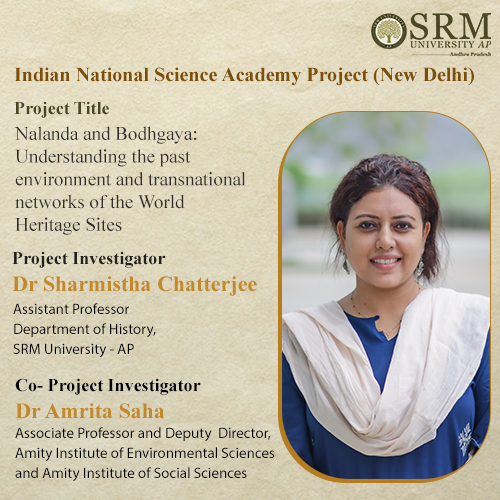
Yet another moment of pride and honour for SRM University-AP as the Indian National Science Academy (INSA, New Delhi) has sanctioned the Project “Nalanda and Bodhgaya: Understanding the past environment and transnational networks of the World Heritage Sites” to Dr Sharmishtha Chatterjee, Assistant Professor, Department of History with a total outlay of Rs 5 lakhs. The co-investigator of the project is Dr Amrita Saha, Associate Professor and Deputy Director, Amity Institute of Environmental Sciences and Amity Institute of Social Sciences, Amity University, Kolkata. The project is a pioneering initiative to make a comprehensive study of the landscape and environmental factors (physical and cultural) governing the Buddhist World Heritage Sites of Nalanda and Bodhgaya (Bihar, India).
One of the first attempts in South Asia to understand monasteries and monastic complexes in relation to the landscape parameters, the work is distinctive in its scope and methodology because of its multidisciplinary approach involving archaeology, history, and environmental science. It aims for a holistic understanding of the sites and the region. Bodhgaya and Nalanda are two major Buddhist sites of India, the first marking the site of enlightenment of Gautama Buddha and the other being one of the oldest educational institutes of ancient times. Both the sites have been witnessing travellers, pilgrims, students, and religious preachers from the farthest corners of the world.
The foremost objective is to investigate the environmental settings (location, settlement geography, palaeolandscape features, layout of the monastic complexes, dietary patterns) of the monastic sites. This will be executed through the generation of a series of maps by superimposing colonial site plans, old maps, satellite imageries and corroboration of the same with extensive field surveys. The scientific study of the topographic delineations, soil samples, and artefactual evidences would be undertaken in the course of the study.
These attempts would generate a detailed study of the regular lives in the two monastic complexes along with the social and cultural ties established with the lesser-known monasteries and villages of the hinterland area. The project also seeks to explore the local, national, and transnational networks emanating from the sites, thus contributing to a global networking. The project is expected to create frameworks for extending the study to the other monastic complexes across South and Southeast Asia. In the long run the work will be published in the form of an annotated atlas featuring the monastic complexes, the wider geographical hinterland, and the transnational networks between India and Southeast Asia. This would serve as one of the noteworthy contributions that puts forth a holistic study of the cultural landscapes of the World Heritage Sites.
- Published in Departmental News, Faculty Achievements, History Current Happenings, History News, News, Research News


